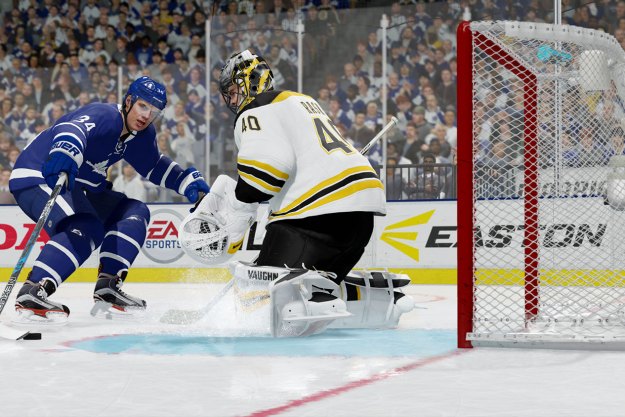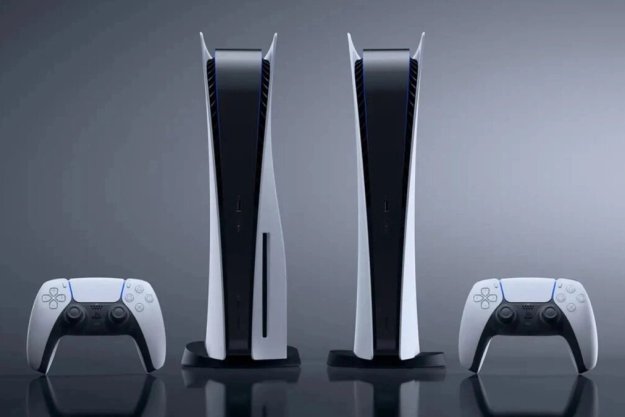
“NHL 18 takes an awkward step forward, exposing the series’ longstanding issues.”
- NHL Threes mode offers a fun arcade alternative
- Robust create-your-own-team mode
- New skill stick dekes are imprecise
- “Be a Pro” lacks a story
- Performance grades still aren’t accurate
NHL legend Wayne Gretzky once said, “Hockey is a unique sport in the sense that you need each and every guy helping each other and pulling in the same direction to be successful.” Admirably, replicating the unique nature of hockey remains the working goal of EA Sports over the years. Glimpses of that authenticity can be found in NHL 18, EA Sports newest hockey game, but the game falters in reaching for that ambitious accomplishment on many levels. It lacks the narrative elements of other sports games that make these sims feel alive and, at times, feels mechanically frustrating. Despite delivering a feature-rich hockey sim, the game often devolves into inconsistent and bland gameplay, despite its best efforts. As you’ll read in our NHL 18 review, the game takes awkward steps forward, exposing the series’ longstanding issues.
Not pulling in the same direction
EA has pared down the controls of the NHL series over the years with the implementation of the “skill stick,” which transposes almost all your controls onto the left and right analog sticks. Whomever you choose to control, either on offense or defense, you move with the left stick, and control your stick’s movement with the right, a.k.a. the skill stick. While it isn’t the only control setting, the two other control schemes — “hybrid” and “NHL 94” — are unrealistic for getting good at the game, as they move shooting controls to the face buttons, muddying up the control scheme and eliminating the ability to make creative shots.
Herein lies the problem that has haunted the series’ recent entries. Mastering the skill stick is necessary but the added layers in NHL 18 expose the control scheme as imprecise, and perhaps too demanding for its own good.
On offense, players now have an array of flashy dekes (decoys) at their disposal, from between-the-legs maneuvers, to toe and heel drags, puck flips, and graceful one-handed moves. All of these are performed by using a combination of the analog sticks and a deke modifier button (the L1 button on PS4).
The added layers in NHL 18 expose the control scheme as imprecise, and perhaps too demanding for its own good.
When pulled off, the animations are slick and they often trip off defenders, but too often you’ll find yourself pressing a combination, then doing the wrong move (or no move at all) and wondering why. The result — Instead of pulling off a graceful windmill deke, you fumble around, lose control of the puck, and gift wrap it to your defender in a frustrating sequence of events.
Though it may sound like a simple issue to be overcome with time and mastery, the fact of the matter is that the controls often do not do what you expect them to. The skill stick still excels afford you more options for creative shot-making and performing basic dekes, but the new, more complex maneuvers do not gel with the otherwise intuitive scheme.
While the changes on offensive feel frustrating, the defensive adjustments are mostly welcome. In an attempt to bring parity on both sides of the puck, EA has added the skill stick to the controls for players on defense. The skill stick gives you precise control over your player’s hockey stick, allowing you to perform poke checks, intercept passes, and generally play more formidable, precise defense. Unlike on offense, the defensive moves give skilled players more nuance. There’s a fine balance between poking the puck away and committing a penalty. Sometimes it feels like too fine of a balance, but attentive users shouldn’t have much of a problem getting the hang of the new defensive freedom.
As you learn the ropes of the new systems at play, it’s apparent that EA knows that NHL 18 has a high barrier for entry. Beyond the recommended skills trainer tutorial, the game, like NHL 17, grades your performance for each game and defaults to offering on-screen advice about when to execute various skill moves. The ability to constantly monitor your strengths and weaknesses keeps you in on the right track, but its presence feels like an inadvertent admission that the game’s minimalistic control scheme isn’t as simple as it should be.
Even with these missteps, NHL 18’s on-ice action can create some exhilarating moments. Out of all of the major sports, hockey is the hardest one to adapt to video games due the sport’s always-in-motion nature. There’s plenty of room for improvement here. The ideas are present, but NHL 18 trips over its own laces too frequently to resemble a noticeable slash in the right direction.
NHL Threes: An NHL Hitz substitute?
Leading up to NHL 18, the most intriguing addition to the series was undoubtedly NHL Threes, a 3-on-3 arcade game mode that harks back to Midway Games’ short-lived early-2000s series NHL Hitz.
To be frank, Threes never reaches the sheer ridiculousness seen in NHL Hitz, but it creates a surprisingly helpful bridge for newer players to the more stringent simulation portion of the game — the meat of the experience.
Relative to story modes like Madden NFL 18’s “Longshot,” “Be a Pro” feels incredibly underwhelming.
With smaller rinks and decreased penalty prevalence, NHL Threes is a faster paced, more carefree alternative that uses all the same controls but with less consequence. It couples this mentality with a bit of zaniness. Playable mascots can lead your team to victory, “money” pucks can add more than one goal to your score and take away goals from your opponent, and the announcing has an over-the-top Midway Games flair to it.
NHL Threes is not simply a tacked-on mode. In addition online and offline multiplayer, you can take a pre-determined imagined team (ours was the Fridge Raiders) through the “Threes Circuit,” a long series of games across three different regions. Along the way, you unlock new players, uniforms, and stadiums. NHL Threes keeps you playing because it exudes personality while remaining fast and fun, unlike the simulation.
An embarrassment of almost riches
While NHL Threes has a distinct personality, the rest of NHL 18 lacks the innovation and vitality that has breathed new life into other sports franchises in the last few years (Madden NFL 18, MLB The Show 17). Unlike these other sports sims, NHL 18 lacks a distinct personality. Other sports sims make you feel as if you are in their respective pro leagues through illuminating color commentary, interesting storylines, and stat tracking and on the spot analysis (through fake tweets, on screen overlays, etc.). NHL 18 sorely lacks in these departments, making it difficult to draw you in and keep your interest throughout its sim experience.

Franchise mode, where many players spend the bulk of their time, introduces expansion draft. You can either start the expansion draft as the new Vegas Golden Knights team, or create your own team to bring the number of NHL teams to an even 32. The latter option lets you create a team name, logo, uniform, mascot, stadium design — the works. The customization options are somewhat limited — you can’t create uniforms and mascots from scratch, for example — but the variant at least allows for a proper expansion draft and lets you feel more in control of your newly created team.
The game’s create-a-player mode, “Be a Pro,” is nearly identical to last year’s version. The biggest addition here is the ability to request a trade, but considering you can choose the team that drafts you at the outset, it doesn’t feel very significant. Cutscenes and personal storylines have become fairly commonplace among the official sports franchises, and their absence here sorely hurts the experience. Relative to story modes like Madden NFL 18’s “Longshot” campaign, “Be a Pro” feels incredibly underwhelming.
The two other major time sinks — the card collecting EA Sports staple, Ultimate Team, and EA Sports Hockey League — are largely unchanged. 3-on-3 matches can now be played in the latter, but it feels as if NHL Threes and the expansion draft were the main focal points in this year’s iteration.
EA’s NHL series could be one of the most complete sports sims, given the number of deep game modes available in NHL 18, but EA hasn’t moved the needle in the modes with most outright longevity.
Our Take
NHL 18 bites off more than it can chew in terms of new gameplay moves, although the defensive skill stick is a welcome feature. The arcade game mode NHL Threes delivers fast and lasting fun, but the simulation modes — the series’ most important components — lacks personality in an age when most sports games ooze personality.
Is there a better alternative?
No, EA Sports’ NHL 18 is the only serious hockey experience around.
How long will it last?
If you’re a serious hockey fan, the game’s many modes could keep you busy until next year.
Should you buy it?
If you’re a hardcore hockey fan, yes, you should buy NHL 18. If you just play casually, you can probably wait and see if the team makes bigger changes next year.
Editors' Recommendations
- The Sims 5: release date speculation, trailers, gameplay, and more
- Sims 4 cheats: all cheat codes for PC, Xbox, PS4, PS5, and more
- Hatsune Miku’s Crypt of the NecroDancer crossover is a perfect fit
- The best single-player games
- The best video game remakes of all time






